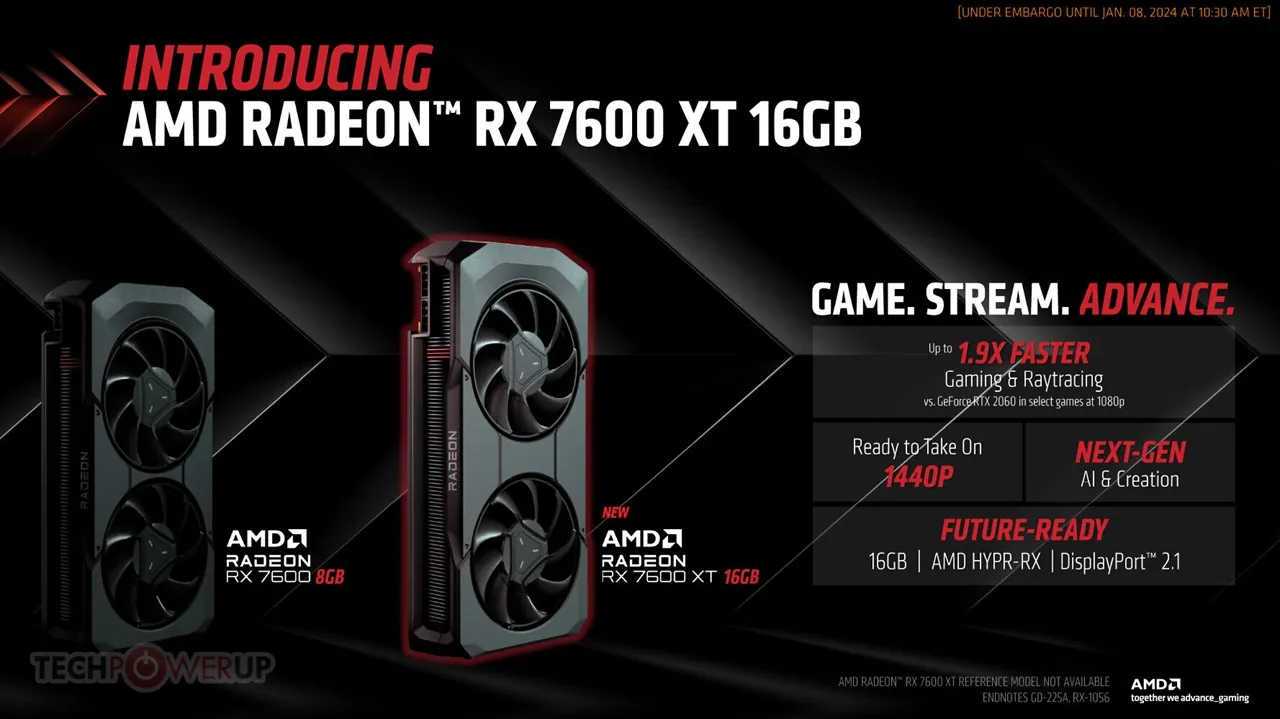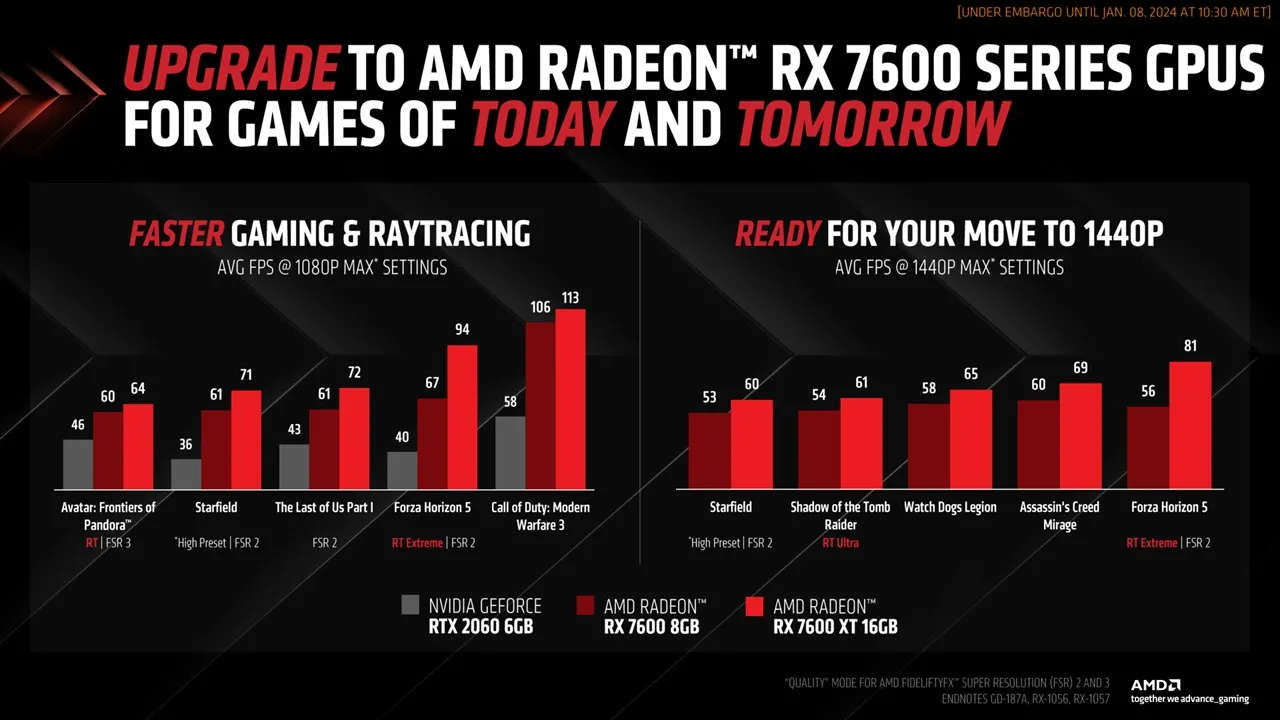
AMD Radeon RX 7600 XT: A Mid-Range Powerhouse Revealed at CES 2024
Contents
AMD recently unveiled the Radeon RX 7600 XT graphics card at CES 2024 in Las Vegas. This mid-range GPU boasts a substantial 16GB of GDDR6 memory, targeting not only 1080p gaming for mainstream gamers but also professionals, especially those working with AI tasks that demand significant memory capacity.
 AMD Radeon RX 7600 XT graphics card showcased at CES 2024
AMD Radeon RX 7600 XT graphics card showcased at CES 2024
Performance and Features for Gaming and Beyond
The Radeon RX 7600 XT leverages technologies like AMD FidelityFX™ Super Resolution 3 and AMD HYPR-RX with AMD Fluid Motion Frames. This allows gamers to enjoy AAA titles even at 1440p resolution, boasting 1.9 times the ray tracing performance compared to the first-generation NVIDIA GeForce RTX 2060.
This GPU is powered by the RDNA 3 architecture, featuring 32 unified compute units, 32 ray tracing acceleration cores, and 64 AI acceleration cores. This combination caters not only to gaming but also to professional workloads, including AI applications running locally, moving away from the traditional cloud-based models.
 AMD Radeon RX 7600 XT internal components and architecture.
AMD Radeon RX 7600 XT internal components and architecture.
A Forward-Thinking Approach to AI Integration
This strategic move by AMD anticipates the growing trend of AI integration in everyday computing. The Radeon RX 7600 XT is positioned to be a key player in this transition, bringing AI capabilities to a wider audience.
Pricing and Availability
The Radeon RX 7600 XT has a suggested retail price of $329 USD for the reference model and is expected to be available later this month. This competitive pricing further solidifies its position as an attractive option for both gamers and professionals seeking powerful yet affordable performance.
The Future of Mid-Range Graphics
The Radeon RX 7600 XT promises a blend of performance, features, and affordability, making it a compelling choice in the mid-range GPU market. Its focus on both gaming and professional applications, particularly AI, sets it apart and positions it for success in the evolving landscape of computing.





Comments (0)